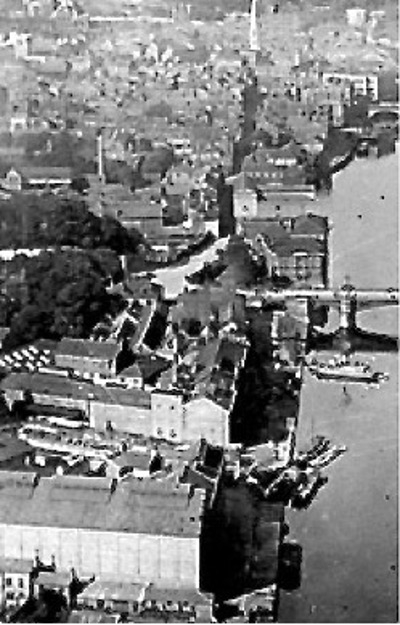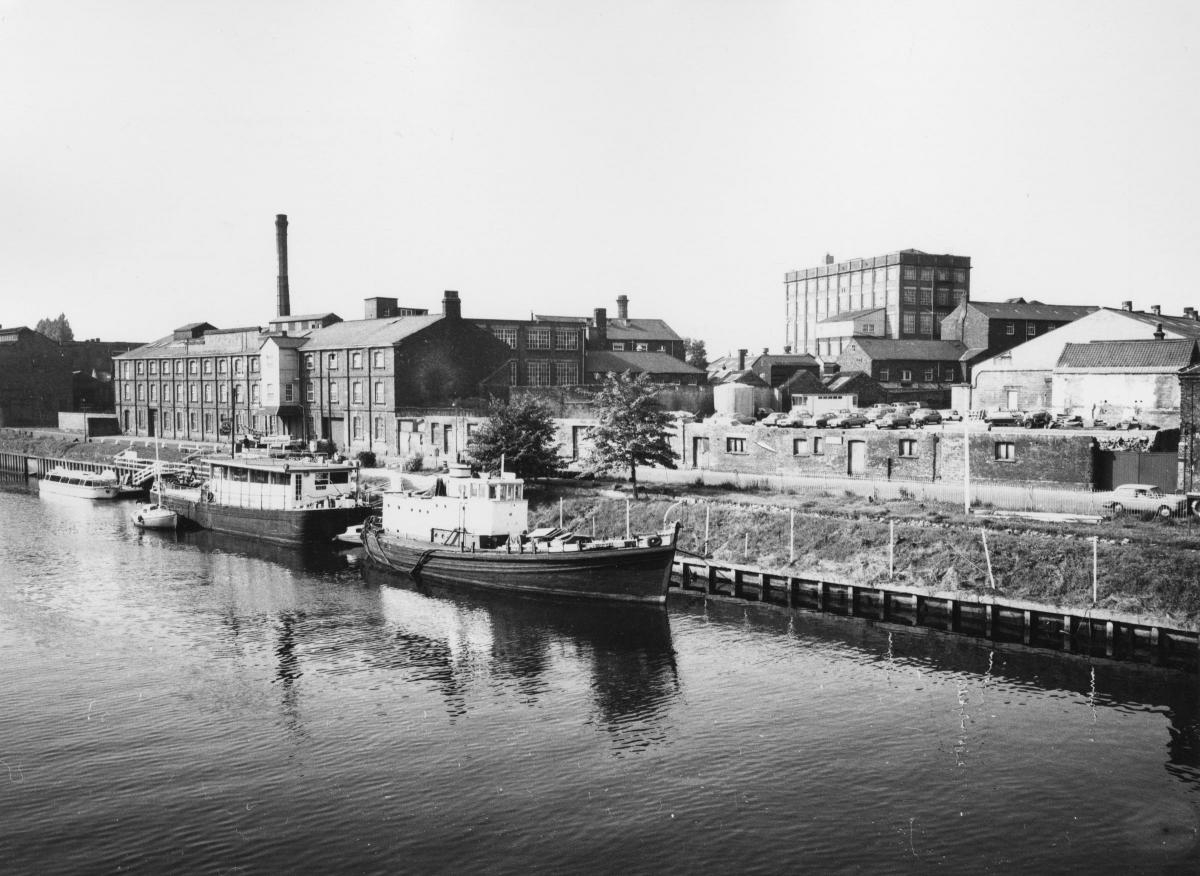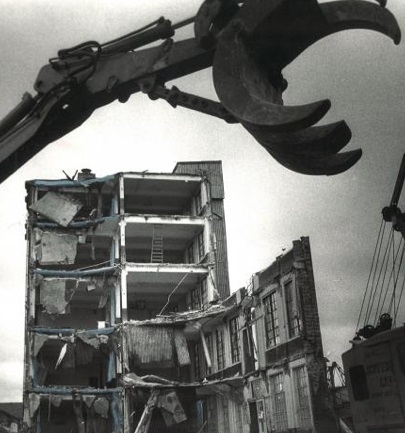



View navigation
 An aerial view of the industry at the north end of Clementhorpe (Photo courtesy of York Press, 1974).
An aerial view of the industry at the north end of Clementhorpe (Photo courtesy of York Press, 1974). Terry's was demolished shortly after the photograph was taken on 6th August 1974. The remaining chimney was demolished in 1974 and the factory itself in January 1975. By this time most of Hargreaves Fertilizer works had been demolished and was in use as a car park. (Source: York City Engineer)
Terry's was demolished shortly after the photograph was taken on 6th August 1974. The remaining chimney was demolished in 1974 and the factory itself in January 1975. By this time most of Hargreaves Fertilizer works had been demolished and was in use as a car park. (Source: York City Engineer) Terry’s looking north-west showing its coal depot in 1974, shortly before demolition. (Source: York City Engineer)
Terry’s looking north-west showing its coal depot in 1974, shortly before demolition. (Source: York City Engineer)